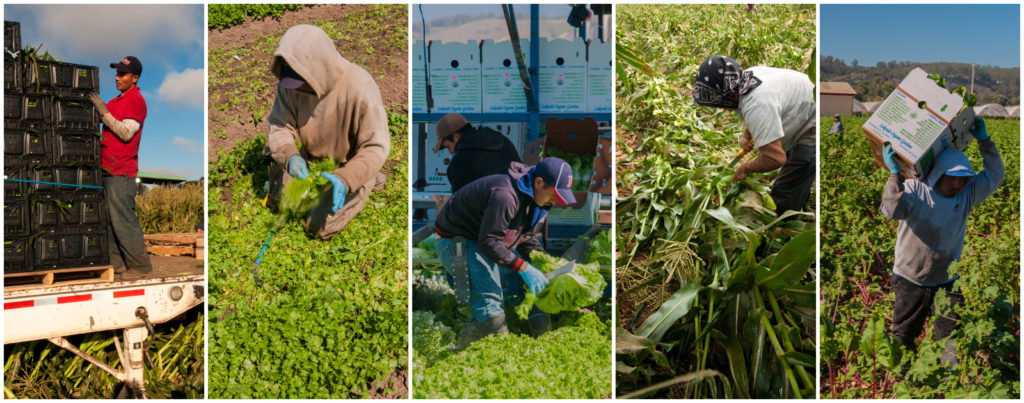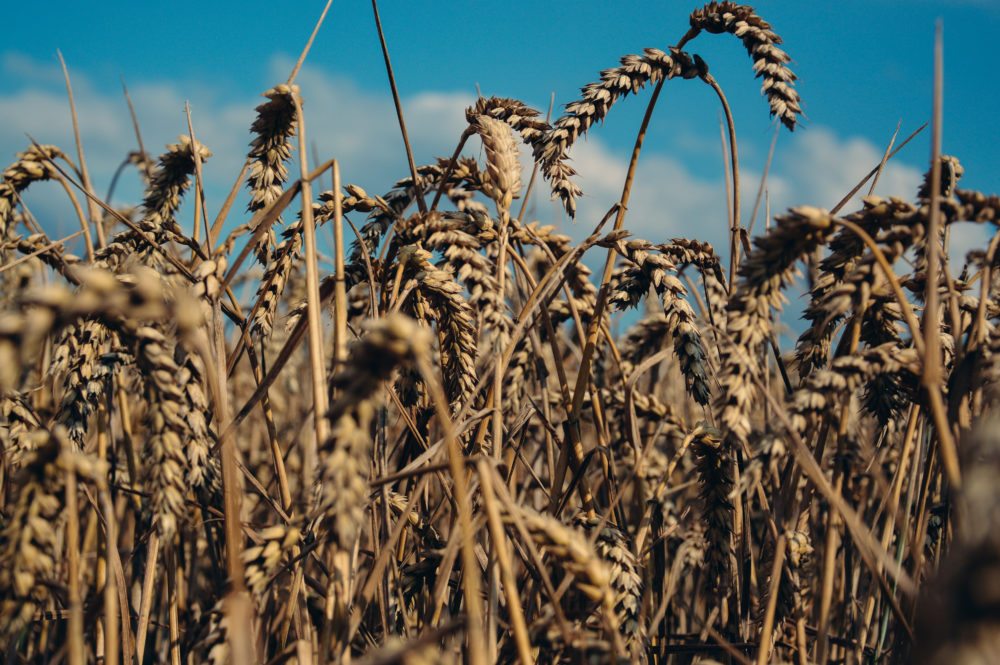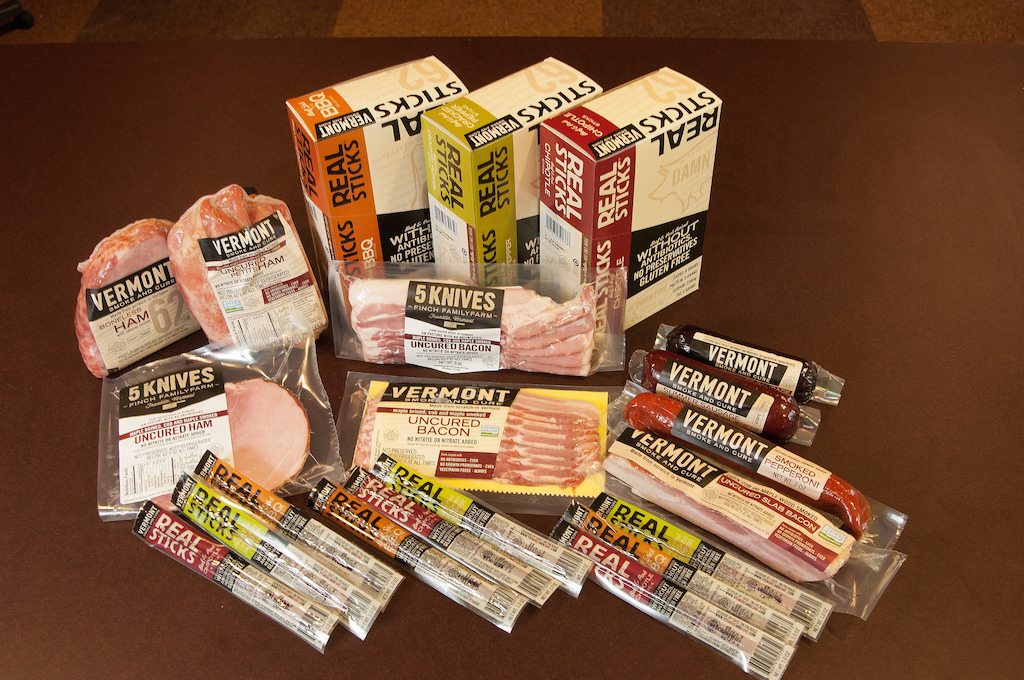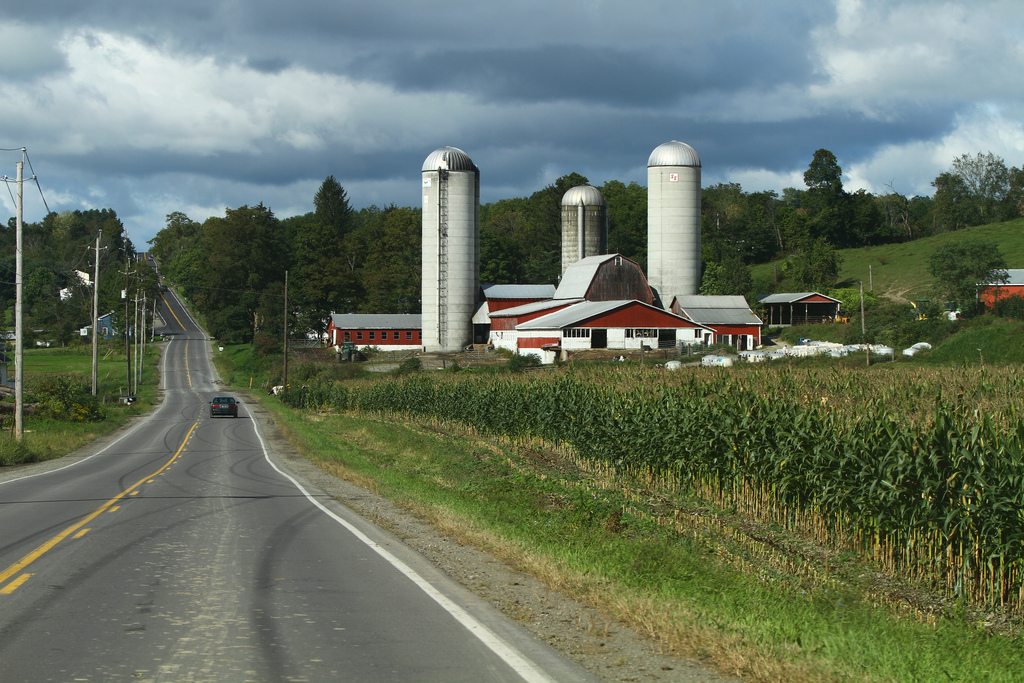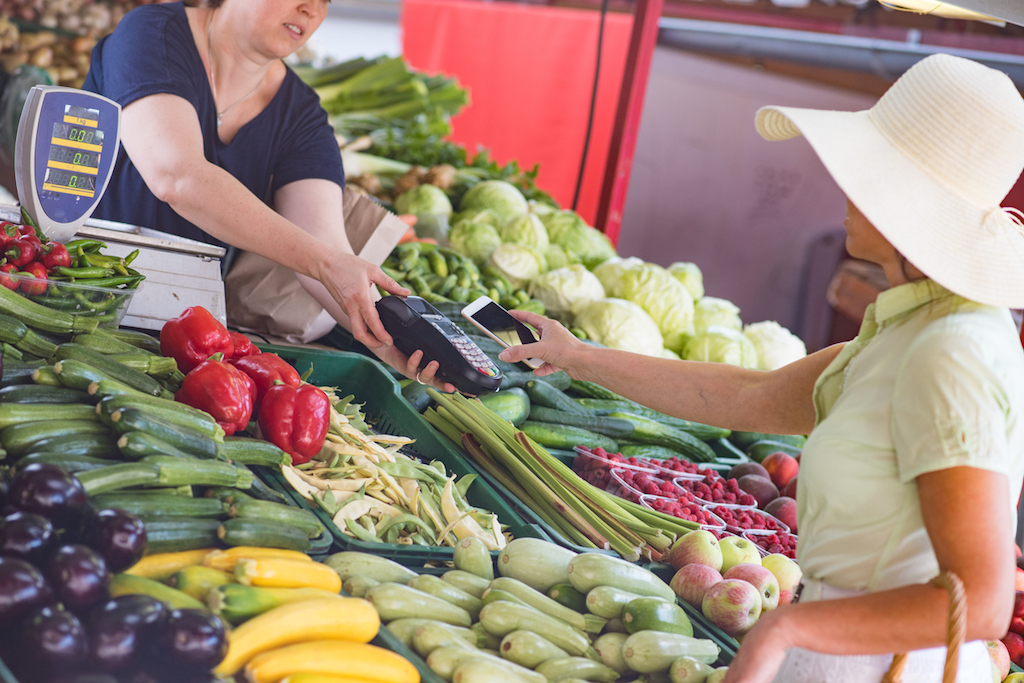
iStock / simonkr
On July 9, a story co-published by The Washington Post and the Food and Environment Reporting Network (FERN) revealed dire news on the food access front: Farmers’ markets were about to lose a key piece of the digital infrastructure needed to take payments from people who rely on Supplemental Nutrition Assistance Program (SNAP, formerly food stamps) benefits to buy groceries.
The Austin, Texas-based Novo Dia Group makes a “Mobile Market+” technology that allows farmers’ market vendors and other non-traditional retailers to accept SNAP benefits and process the transactions on an iPhone, iPad or iPod touch. The group handles around 40 percent of those transactions at farmers’ markets across the nation, servicing 1,700 of the 7,000 total markets that are authorized to accept SNAP. But in early July, with little advance warning, Nova Dia said it would discontinue its services beginning July 31. The announcement left markets from coast to coast bracing for the possibility that they’d no longer be able to accept SNAP dollars. It was a scenario that threatened to bar thousands of people from accessing an important source of fresh food—and deprive markets themselves of critical income.
That flurry of developments followed an impassioned letter Cuomo wrote to United States Department of Agriculture (USDA) Secretary Sonny Perdue, claiming that USDA’s “failure” to maintain the partnership demonstrates “the worst of government ineptitude and is a rejection of your agency’s core principles.”
~
Earlier this year, the Food and Nutrition Service (FNS), the branch of USDA that manages the SNAP program, contracted Financial Transactions Management (FTM)—a company less than a year old—to oversee the distribution of processing equipment to farmers’ markets nationwide. FTM decided to cut ties with Novo Dia and work instead with First Data, an Atlanta-based financial services giant, and others. According to FERN’s story, the decision delivered a serious blow to Novo Dia, whose mobile application had been a favorite of farmer’s market vendors for its ease of use and because it eliminated third-party fees related to processing SNAP transactions.
 Novo Dia
Novo Dia Forty percent of SNAP-authorized markets use Novo Dia’s Mobile Market software exclusively to serve customers who purchase food using their benefits
Josh Wiles, Novo Dia’s founder, told FERN and the Post that the company can no longer “remain financially viable” without the federal contract. Wiles had hoped to offset the high cost of doing business through eventual economies of scale. (SNAP transactions require more costly security measures than standard credit card purchases, and yet payments are generally for low dollar amounts—a hard bargain for any financial services company.) Without continued access to new markets and customers, Wiles said, Novo Dia can’t afford to keep running.
But Novo Dia’s product may prove difficult to replace, and its predicament leaves markets in the lurch—not to mention a significant portion of the 41 million Americans who rely on SNAP to feed themselves and their families.
In theory, using SNAP benefits to purchase fresh fruits and vegetables at farmers’ markets should be a simple proposition for program participants. Since 2004, all 50 states have used the Electronic Benefit Transfer (EBT) card system to replace physical food stamps, allowing easy transfer of government benefits between users and SNAP-authorized retailers. At its best, EBT works just like a debit card. In most markets, it’s only a little more complicated: A customer swipes their SNAP EBT card at a centrally located point-of-sale (POS) device, which debits a requested amount from the card. In exchange for the swipe, customers can “purchase” food items with a paper scrip or tokens worth the deducted value. Farmers are paid once they submit the tokens and scrips they received to the market’s management.
Currently, there are two types of EBT devices available on the market. Wired POS devices are the more complicated variety, as they require an electrical outlet and an analog telephone line or wired internet access to function. Wireless POS devices like Novo Dia’s, on the other hand, need only cellular service to connect to the state’s EBT system. That makes them particularly popular at farmers’ markets, since wired devices can be tough to operate in informal settings, like parking lots and outdoor parks.
Some POS devices (namely, the wired kind) are solid pieces of hardware, like the boxy credit card readers you frequently see at the mall or in a traditional grocery store. Others, like cloud-based POS devices, need only internet access to work; their compatibility with pre-existing POS hardware or devices like the iPad means a lot more flexibility for retailers.
Because farmers’ markets vary in size, scope, location, and resources, that flexibility is crucial. And it’s why Novo Dia’s Mobile Market+ software was so widely used. Requiring only an internet connection and compatible with Apple iOS devices, the software served as a one-stop shop that could process SNAP benefits, the Special Supplemental Nutrition Program for Women, Infants and Children (WIC) transactions, and standard credit and debit purchases, too. Forty percent of the 7,000 SNAP-authorized markets in the country use it exclusively to serve customers who rely on benefits.
So far, the new service providers revealed by FTM to replace Novo Dia don’t seem to be as flexible. Electronic Commerce and Merchants Bancard Network are respectively offering the “Exadigm G3” terminal and the “MIURA Shuttle M006,” both of which require a specific piece of physical hardware to fully function. That may be a disappointment to the 400 markets and farmer-vendors currently on a waitlist for SNAP processing equipment, according to FNS.
But ease of use isn’t the only problem. Markets that relied on Novo Dia, and now find themselves without a way to take SNAP dollars, won’t even receive a free upgrade to these more cumbersome systems.
Why? Because markets that previously used Novo Dia’s software are not eligible to receive new equipment from the state. An official USDA statement on SNAP access released on July 14 said markets that had been “equipped” under previous contracts—which include those that used Novo Dia’s Mobile Market+ software—will not be supported by FTM.
With replacement equipment typically requiring an investment of between $600 and $900, the service gap leaves farmers’ markets—many of which already struggle to sustain themselves—in a difficult position.
“A lot of farmers’ markets are community-based,” says Lily Kesselman, director of the South Bronx Farmers’ Market based in New York City. “They don’t have a budget for staff. They don’t have bookkeepers and all that to do the paperwork. They don’t have the money to pay for equipment, you know?”
 Flickr / USDA
Flickr / USDA The above photograph depicts a shopper using food stamps to purchase groceries in 1970. At many farmers’ markets, food-stamp users can access programs that compound their purchasing power, such as the “Health Bucks” program in select cities. This could be lost in many states if Novo Dia shuts down as planned
For SNAP beneficiaries, the inability to purchase fresh food using their benefits comes with a compounding issue: it prevents them from accessing other beneficial programs directly linked to their SNAP purchases.
The New York City Department of Health and Mental Hygiene (DOHMH), for instance, runs a “Health Bucks” program that provides “additional purchasing power” to New Yorkers who shop with their benefits. For every $5 recipients spend at a farmers’ market, they receive $2 in “Health Bucks,” which they can use to extend their fresh-food budgets. Other states offer similar incentive programs. In Michigan, for example, Detroit’s “Double Up Food Bucks” model has benefitted more than 300,000 families since it began in 2009.
“If we can’t run SNAP transactions, these people can’t get health bucks either,” says Kesselman. “That would be a secondary impact. These health bucks provide a 40-percent increase in buying power for our EBT shoppers, and that’s a huge thing.
“Families here really rely on SNAP to put food on their table.”
~
Some farmers’ markets, however, have completely avoided falling victim to crippling—albeit simple—technology shifts like the Novo Dia SNAFU. Their method? Creating a system partially, if not fully, independent of the federal program.
“[The state has] ensured that farmers’ markets will have the equipment, and that there will be no charge, by writing into their contract with the vendor that the vendor must provide the wireless technology as part of their contract,” says Carle Brinkman, the Ecology Center’s Food & Farming program director. “That’s part of the beauty of the California model—that the state is leveraging the power that they have with the vendor that provides the POS devices, to ensure that farmers’ markets will have access.”
“If you look at the broader landscape,” she says, “I’d say it didn’t necessarily impact us.”
“It didn’t impact us, because California is so wonderful at protecting farmers’ markets to make sure that this EBT processing capability is available,” says Kate Creps, executive director of Heart of the City Farmers’ Market in San Francisco’s Tenderloin neighborhood, of Novo Dia’s decision to withdraw its services.
“We get our processing equipment through the state, which is able to create some sort of contract that does not need to go through Novo Dia.”
Several other states have adopted similar programs that offer easy, no-cost-equipment solutions. Michigan is one such example, where the Michigan Farmers’ Market Association (MIFMA) advocated for the state’s 2018 fiscal year budget to include funding for “no-cost, wireless POS devices to farmers’ markets and direct-marketing farmers,” according to Amanda Shreve, the executive director at MIFMA.
“The one-time budget allocation is considered part of the administrative cost of implementing SNAP in our state and is therefore eligible to be split 50/50 between our state and FNS,” Shreve wrote in an email. “This funding is independent of the FNS SNAP equipment funding.”
 Flickr / USDA
Flickr / USDA California’s farmer’s markets will be largely unaffected by Novo Dia’s shutdown. The FNS’s only involvement is to authorize the markets before they can receive SNAP benefits. From there, a local POS model handles transactions
In states like Montana, non-profit groups also play a large role in local equipment programs. Most markets in Montana opt to use a “basic” wireless processing machine that is “not on a smartphone or tablet,” says Tammy Howard, a program specialist at the not-for-profit National Center for Appropriate Technology (NCAT) based in Butte, Montana. NCAT advises markets to avoid using tablets or smartphones because doing so would render them responsible to pay data charges, which “can be quite high.”
“Most of the market managers in Montana are volunteers and use their personal cell phone for market business, but paying for extra data [isn’t] in the market budget,” says Howard. “The exception to this has been with some of the newer markets and the farms that are authorized to accept SNAP, and they have been impacted by the Novo Dia Group shutdown.”
However, unlike the CalFresh program, NCAT does not have the capacity to offer no-cost POS devices to markets. “NCAT has had a very small grant from the Montana Department of Public Health & Human Services to fund equipment for a limited number of markets,” says Howard.
If the CalFresh system—and several other locally-driven systems—is exempt from the tech-fail blowback, why can’t more farmers’ markets adopt a similarly state-based model?
Brinkman, from the Ecology Center, has a similar response.
“That’s a really good question,” she says. “In some states, it might not feel like a priority to the decision makers, but that would be a guess; in other states, perhaps there is someone who is a champion [of farmers’ markets] and is particularly passionate—that might have something to do with it.”
~
So, what’s next?
In the midst of the Novo Dia shutdown, farmers’ markets nationwide are still struggling to find a solution.
The situation doesn’t just compromise access for SNAP users. It “can really hurt our farmers,” says Kesselman. Although her market will continue using the current software through the end of the season—thanks to Cuomo’s agreement with Novo Dia—it will still have to find another solution once this one runs out. “I don’t know if our farmers will continue to come and sell without this. It’s a huge part of their income.
“We’re dedicated to do whatever we have to do to keep running.”

